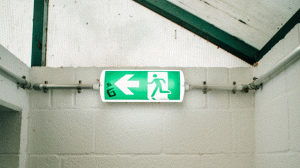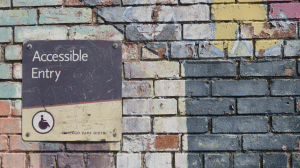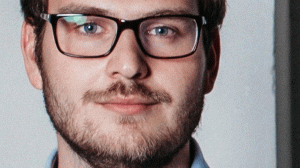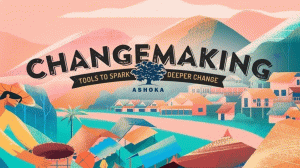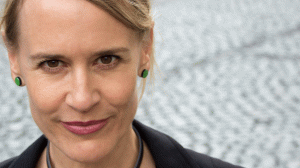The number of people fleeing war, violence and persecution is higher today than it was during World War II. Of the 250 million migrants, 60 million are refugees who have fled their home countries or have been internally displaced. 3.88 million Syrian citizens are fleeing from a civil war and other factors has resulted in an influx of people entering Middle Eastern, North African and European countries.
On 31.05.16, we had the opportunity to attend ICT4Refugees. ICT4Refugees, hosted by the Federal Ministry for Economic Cooperation and Development (BMZ), betterplace lab and Kiron Open Higher Education, focused on the potentials of ICT — information communication technology — in the context of forced displacement. The conference took on three broader themes: ICT for Stability, ICT to tackle challenges in camps and ICT for education. The conference presented research finding of field research conducted in Greece, Jordan and Turkey by betterplace lab and Kiron Open Higher Education.
How can information communication technology (ICT) projects actually help refugees?
ICT projects can help with both short-term and long-term needs refugees may have, including:
- basic and essential needs
- medical care
- communication
- information
- education
- employment and skill development
Basic and Essential Needs:
There are some items, like food shelter, clothing and toiletries that can not be provided digitally, but ICT projects have the potential to play a large role in the organizational aspect of providing these needs. For example, in some areas refugees are issued prepaid credit cards from NGOs in order to buy necessities.
Medical Care:
There are not many apps or ICT projects that are being developed or have been besides symptom checking apps for refugees to use by themselves. In this area, face-to-face communication is critical, so access to symptom checking apps means nothing without a variety of audio-visual apps that connect refugees in need of assistance with medical professional. There is a huge potential in this area to create innovative ICT projects in the media field and 3DMena is doing just that. 3DMena uses the technology of 3D printers to create prosthetics for refugees who have lost limbs.
Communication:
Digital devices have a higher chance of being used for communicational purposes to connect with friends and family.
Social networks and available messaging apps have mostly been able to fulfill this need, but there are ICT projects which can help actually reunite broken families. Refunite, a civic tech project, has been successful at finding and reuniting families in sub-Saharan Africa and is now working toward the reunification of families in Jordan. The Red Cross also runs a program called Trace the Face where photos are posted of refugees searching for their family and can be contacted through the project. NGO ICT projects are also making it possible to use these channels in order for refugees to reach and maintain contact with those who are reaching out and helping.
Information:
Access to information is an extremely important when allowing refugees to orient themselves, discover what they need and to avoid exploitation. Refugees need to understand where and how to register themselves and find provisional needs, but the need for information does not end there. Once settled, refugees need information regarding the legal process and finding resources and services they are in need of.
There are two ICT projects that help with the flow of information to refugees in need of it — 8rbtna and refugeeinfo.eu. There is still the opportunity to create platforms in which refugees can gain access to valuable information that is vital to integration within society.
Education:
Education is the building blocks of creating a new life and opportunity for refugees. UNICEF estimates more than 13 million children in the Middle East are not in school — this includes about 3 million Syrians inside and outside of the country. If this state of no access to education continues there will be a “lost generation” which could be an exponential cost for the future. If there is no access to education, many children will grow up without any skills or knowledge to obtain and maintain a job and will most likely end up on the street or will return to Syria while still young and die. The main problem is integration of refugee children in host country school because of strains on resources, language barriers, previous curriculums, absence of schooling and psychological trauma.
There is a growing amount of ICT projects that help to combat no educational opportunity, such as elmedresa.org and Edraak. Elmedresa is an online learning platform that was launched by the Syrian Education Commission in 2016. The NGO was founded to teach Syrian children and teenagers in Turkey in Arabic based on the Syrian Curriculum. Edraak is an Arabic-language MOOC Platform supported by the Queen Rania Foundation. The project, which houses online courses, aims to make post-secondary education and vocational training accessible to more people in Jordan.
Employment and Skill Development:
Employment and Skill Development: One of the largest challenges refugees face is integration into the workforce of the host community. This stems from the larger problem that opportunities to find work are limited due to legal constraints and language barriers.
One ICT initiative, 3DMENA, aims to create positions of social and community work so refugees are able to engage in meaningful activities where they can gain work skills and experience. Another ICT project that helps to train refugees is ReBootKAMP. ReBootKAMP trains refugees in advanced tech skills — a valuable skill that is successful in the USA — through an intensive 16 week course in software development.
Strengthening Existing Systems:
Technology can have a significant impact in logistics and helping NGOs and other actors work more effectively. In this category, ICT can be used to directly interact with refugees.
For example, NGO Support to Life uses self developed software to create more efficiency in their work and increase accountability. They use various forms of technology to assess and conduct surveys, evaluate and process responses, then share this data with other NGOs. Spark, another organization, uses technology to go and help refugees apply online for scholarships. Marhacar uses ICT projects to improve logistics and coordination in Lesbos.
There are many facets in which ICT projects can help foster integration into society for refugees, but there are also many opportunities through ICT that can enable refugees to to take matter into their own hands. By giving refugees access to basic needs, information, skills and education, it helps foster a community in which there is an opportunity to create new lives and become fully integrated members of the community.
If you want to get involved with creating innovative solutions for refugees through technology, here are some other organization to contact in addition to the ones mentioned above:
Refugee Open Ware — ROW creates opportunities for conflict-affected communities to participate in this revolution, through R&D, training and startups that leverage the technology driving it – technology such as robotics, artificial intelligence, 3D printing, the internet of things, brain-computer interface, and virtual/augmented reality. Their approach is to promote peace and stability through dignity and purpose. We focus on fragile and conflict-affected areas, where instability has resulted in unfathomable deprivation and suffering, and where vicious cycles of violence, poverty and disaffection are most challenging to break.
Capgemini — Capgemini understands that business value cannot be achieved through technology alone. It starts with people: experts working together to get to the heart of your individual business objectives and develop the most adapted solutions to fit these requirements. We believe this human-centered approach to technology is what makes the difference for your business.
Endless Computer — The computer revolution is one of the greatest revolutions in human history. And yet, 75% of the world still lives outside of its reach, struggling to fulfill the most basic of needs. Health, education, livelihood. What would a world look like where everyone has access to the opportunities that computing can offer? To full desktop computers with fast and easy software? The sum of human knowledge would be at their fingertips. Education, job opportunities, health information, all accessible to everyone. That world is possible. Our mission is to build it.
Field Ready — Their vision is guided by a radical transformation in the way that needs are met in domestic disasters, developing countries and other low resource areas. Our approach embraces a respect for others, an openness to learning and experimentation and a readiness to work with a broad range of stakeholders.
Startup Boat — Selected changemakers such as entrepreneurs, scientists, NGO workers, activists, developers, artists, strategists and investors brainstorm about problem statements and potential solutions to the European refugee crisis.
Support to Life — Support to Life is a humanitarian aid agency founded with the principal objective of working with communities to help them meet their basic needs and rights.
Techfugees — Techfugees is a social enterprise coordinating the international tech community’s response to the needs of Refugees. Techfugees organises conferences, workshops, hackathons and meetups in around the world in an effort to generate tech solutions that can help refugees.
Originally published June 2, 2016


